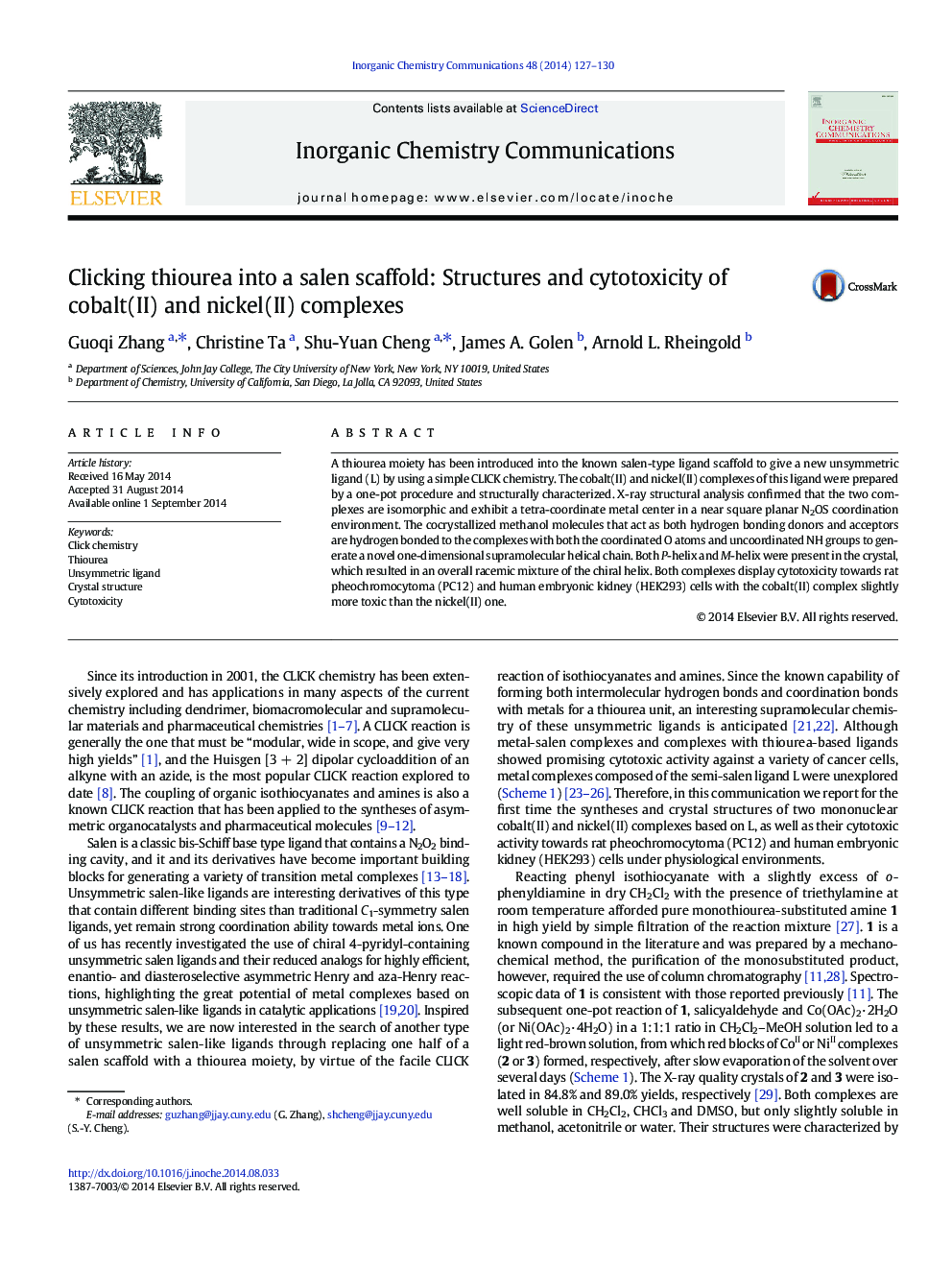| Article ID | Journal | Published Year | Pages | File Type |
|---|---|---|---|---|
| 1303687 | Inorganic Chemistry Communications | 2014 | 4 Pages |
•The CLICK chemistry was applied to modify salen ligands with a thiourea moiety.•Mononuclear CoII and NiII complexes were prepared from the new ligand.•1-D helical chains with P- and M-chirality were observed in the crystals.•Cobalt(II) complex exhibits higher cytotoxicity against PC12 and HEK293 cells.
A thiourea moiety has been introduced into the known salen-type ligand scaffold to give a new unsymmetric ligand (L) by using a simple CLICK chemistry. The cobalt(II) and nickel(II) complexes of this ligand were prepared by a one-pot procedure and structurally characterized. X-ray structural analysis confirmed that the two complexes are isomorphic and exhibit a tetra-coordinate metal center in a near square planar N2OS coordination environment. The cocrystallized methanol molecules that act as both hydrogen bonding donors and acceptors are hydrogen bonded to the complexes with both the coordinated O atoms and uncoordinated NH groups to generate a novel one-dimensional supramolecular helical chain. Both P-helix and M-helix were present in the crystal, which resulted in an overall racemic mixture of the chiral helix. Both complexes display cytotoxicity towards rat pheochromocytoma (PC12) and human embryonic kidney (HEK293) cells with the cobalt(II) complex slightly more toxic than the nickel(II) one.
Graphical abstractA thiourea moiety has been introduced into a salen-type ligand scaffold to give a new unsymmetric ligand by CLICK chemistry. The cobalt(II) and nickel(II) complexes were prepared by a one-pot procedure and structurally characterized by X-ray crystallography. Both complexes are isomorphic and exhibit a tetra-coordinate metal center in a near square planar N2OS coordination environment. Intermolecular hydrogen bonds mediated by solvated methanol assemble the complexes into one-dimensional helical chains with P- and M-chirality. Cytotoxic activities of both complexes against the PC12 and HEK293 cells were studied.Figure optionsDownload full-size imageDownload as PowerPoint slide
